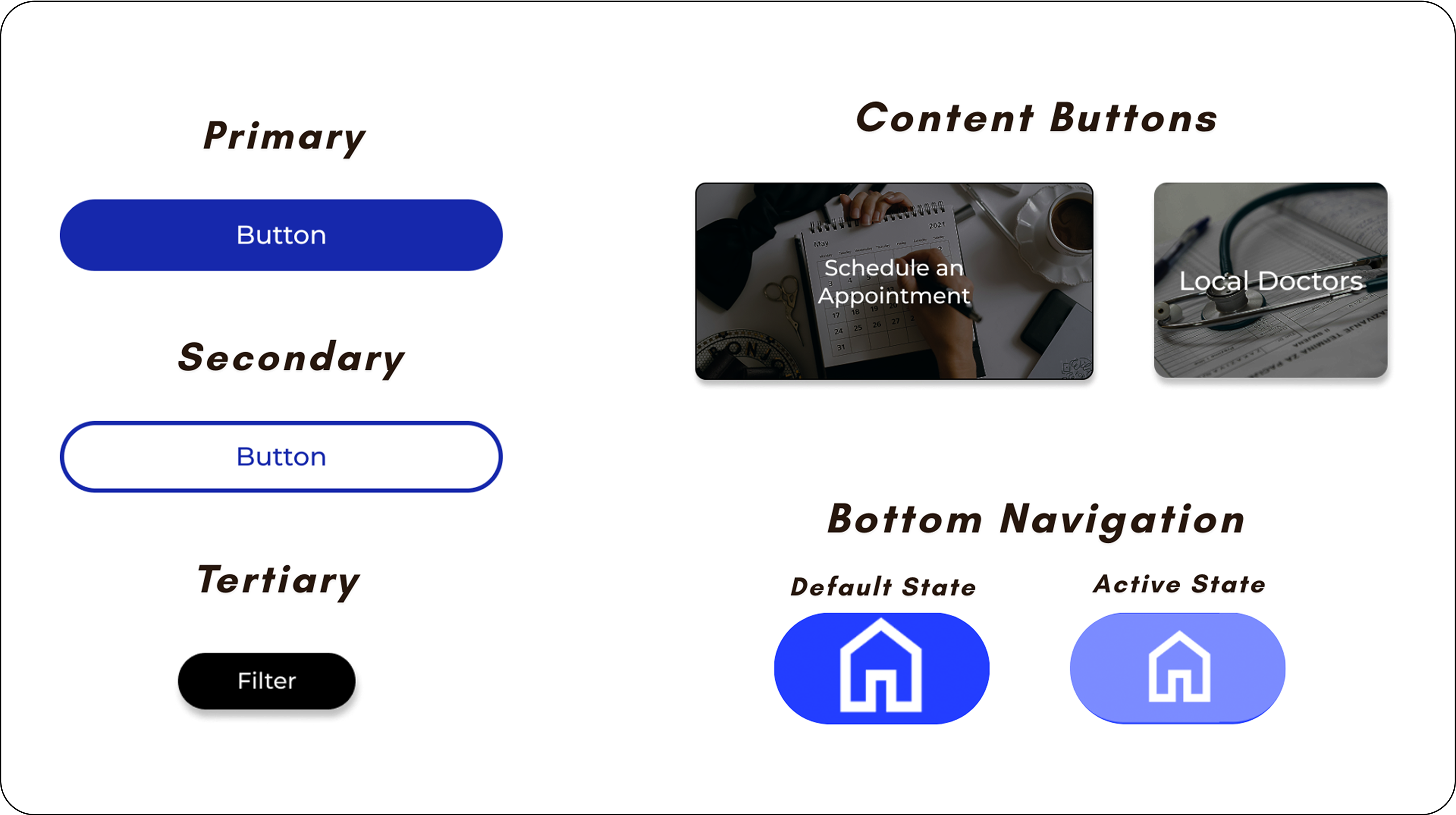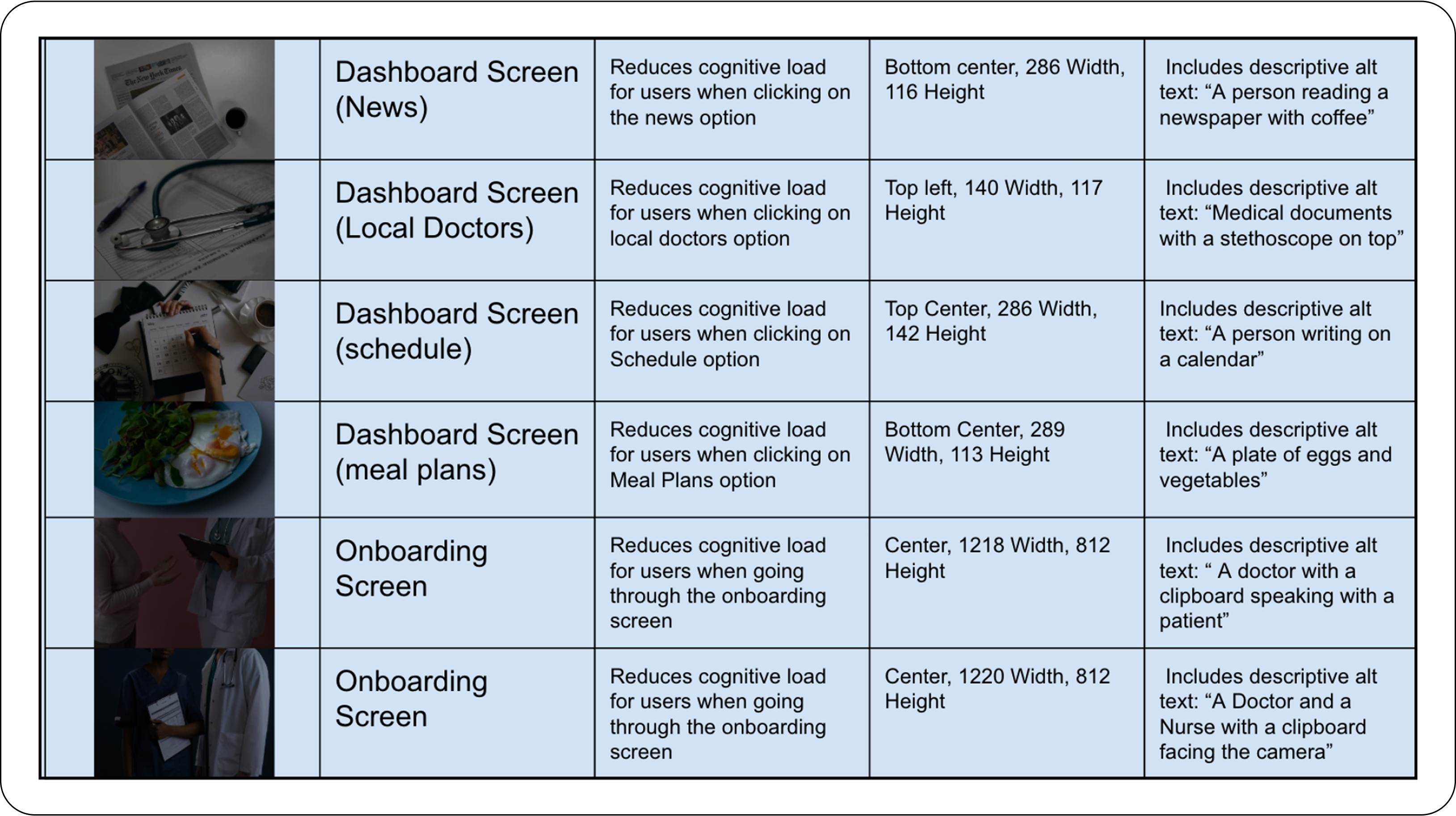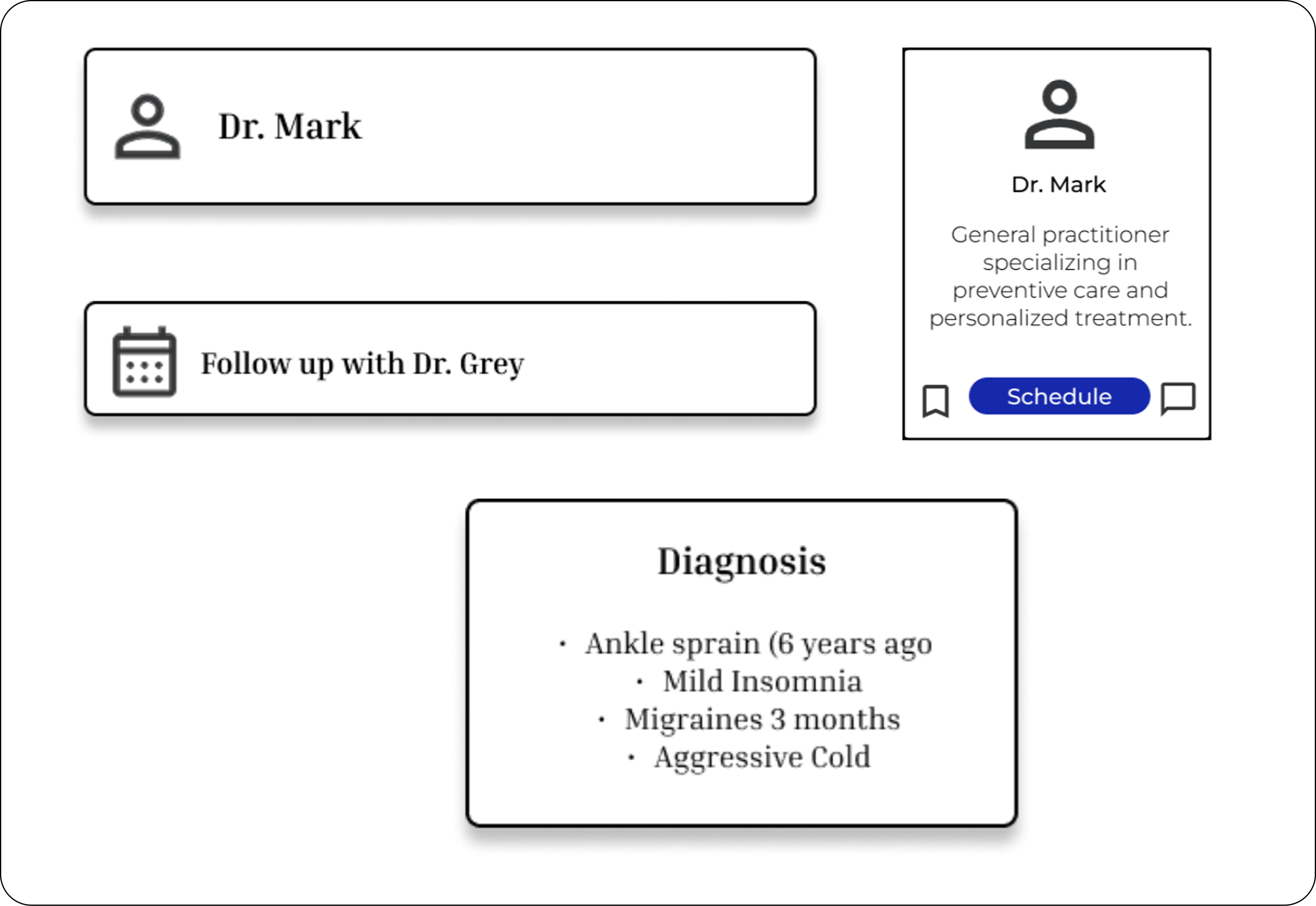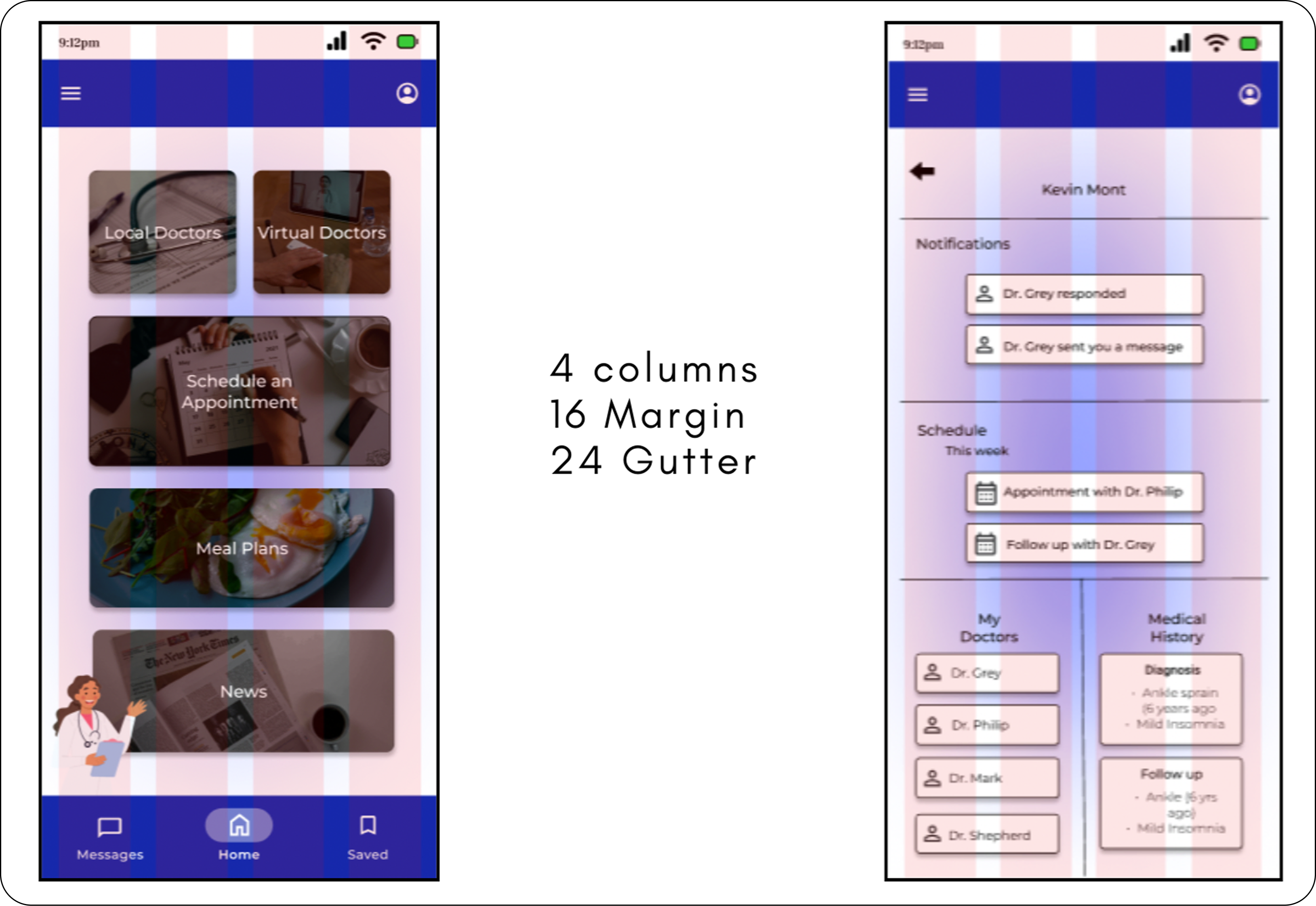🎯 Define
👤 User Personas
.png)
.png)
🗺️ User Journeys
.png)
.png)
🔀 User Flows
.png)
.png)
Empowering users to take control of their holistic health journey
Users need a simple, centralized way to manage their health information and learn how to live healthier lives in one place.
A mobile app that:
Provides secure and convenient access to personal health records
Enables direct communication with trusted medical professionals
Offers customized health guidance for overall well-being
Through my research and personal experience, I discovered that many users like myself often jump from platform to platform searching for trustworthy health information and credible doctors.
Users lacked access to trusted medical professionals, which prevented them from receiving accurate advice on care.
Many people go years without detecting worsening conditions due to limited resources and fragmented health services.
The absence of reliable information from verified sources can lead to poor health decisions and delayed treatment.
Method: I conducted interviews with 3 users to understand:
Sample Questions:
Method: I created an online survey to gather feedback from a broader audience, allowing me to understand trends and user preferences through measurable data.
Sample Questions:
✅ Strengths:
⚠️ Weakness:
✅ Strengths:
⚠️ Weakness:
.png)
.png)
.png)
.png)
.png)
.png)
Method: With the help of UXtweaks, I was able to send out card sorts to 5 participants.
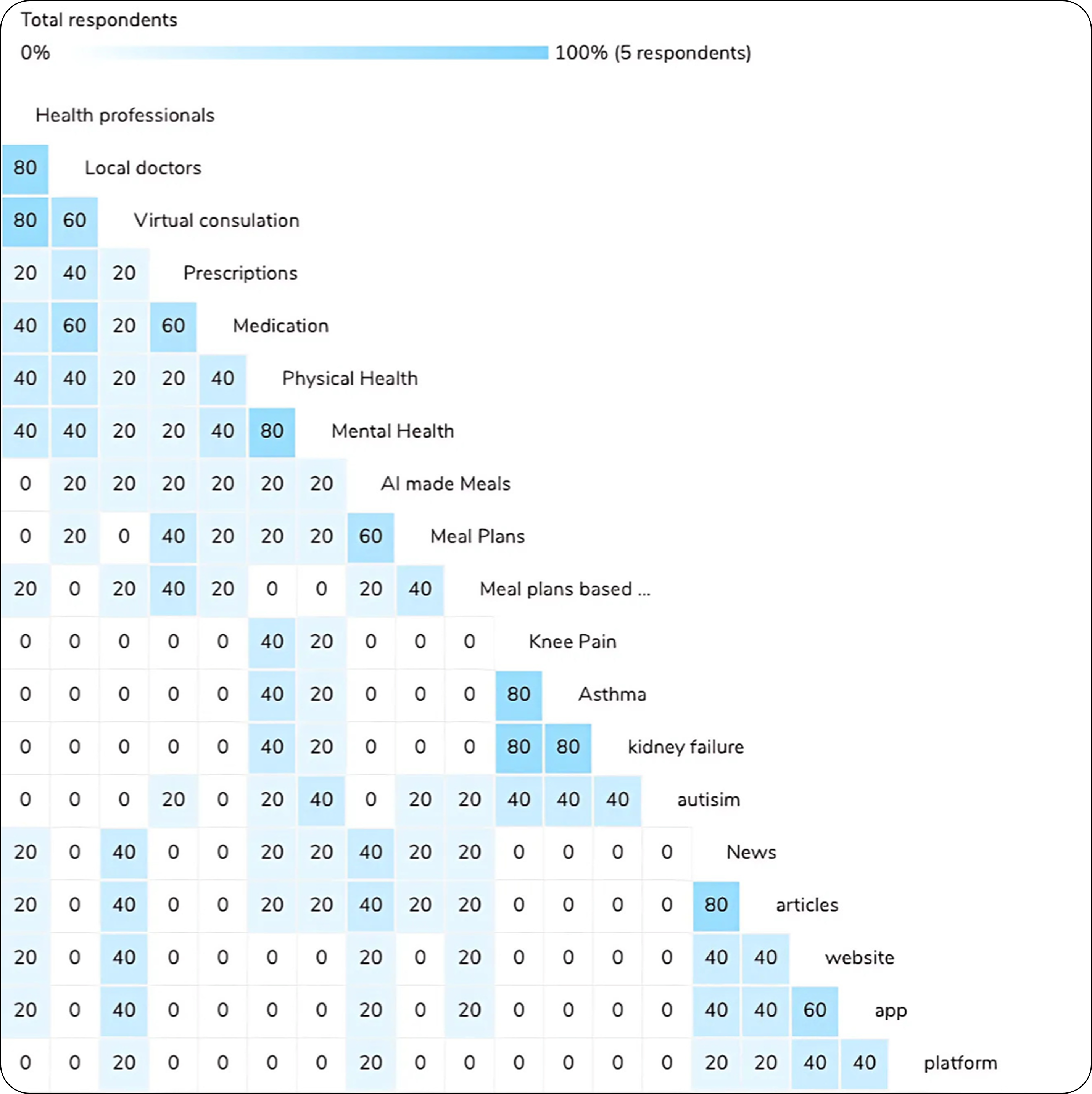
Key Learnings:
Most participants categorized local doctors and virtual consultations into the same category as health professionals
Participants placed physical health and mental health categorized separate
These results lead me to not have health professionals as a general option. Instead, give an option for health professionals or virtual consultations
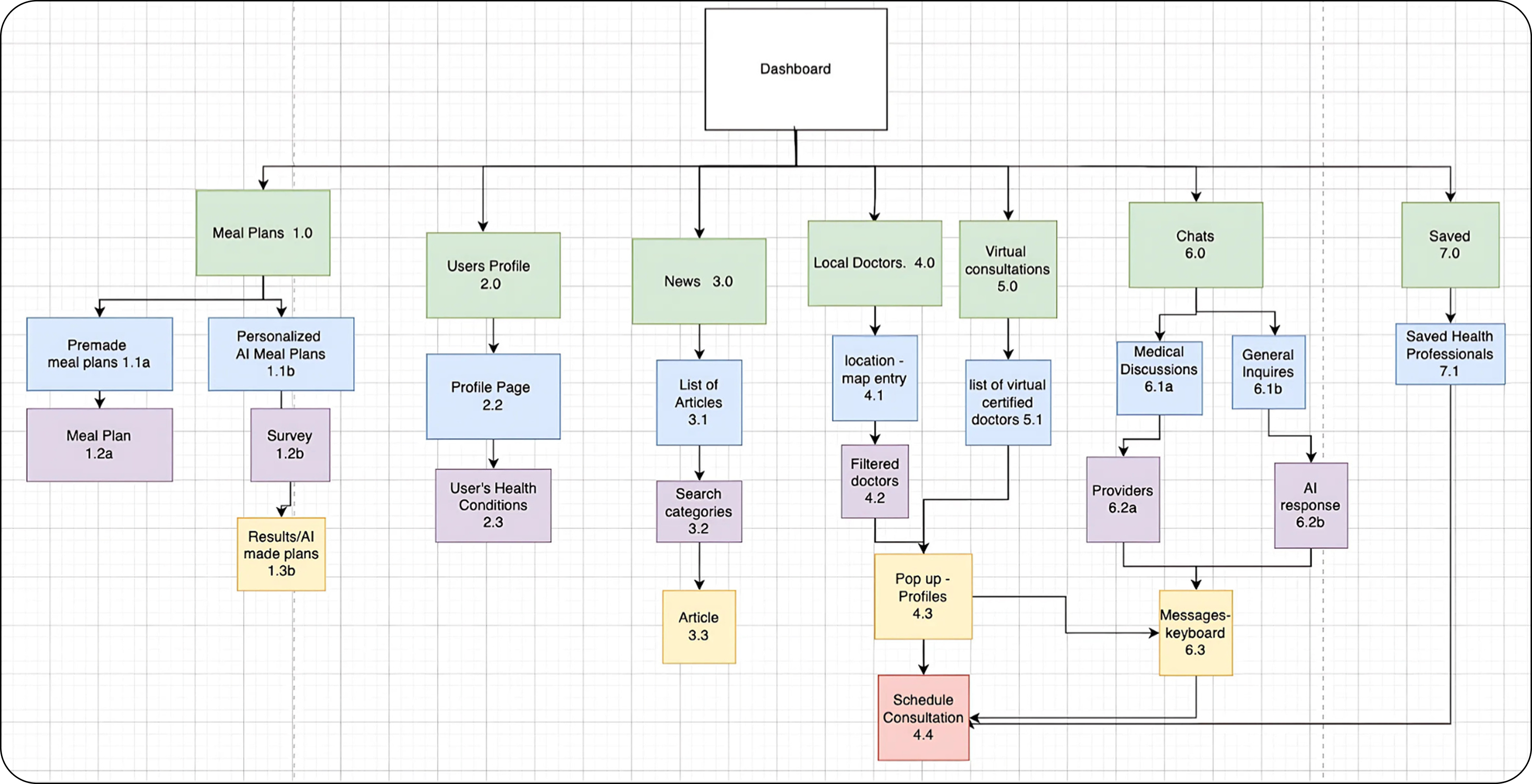
Paper wireframes & Digital wireframes
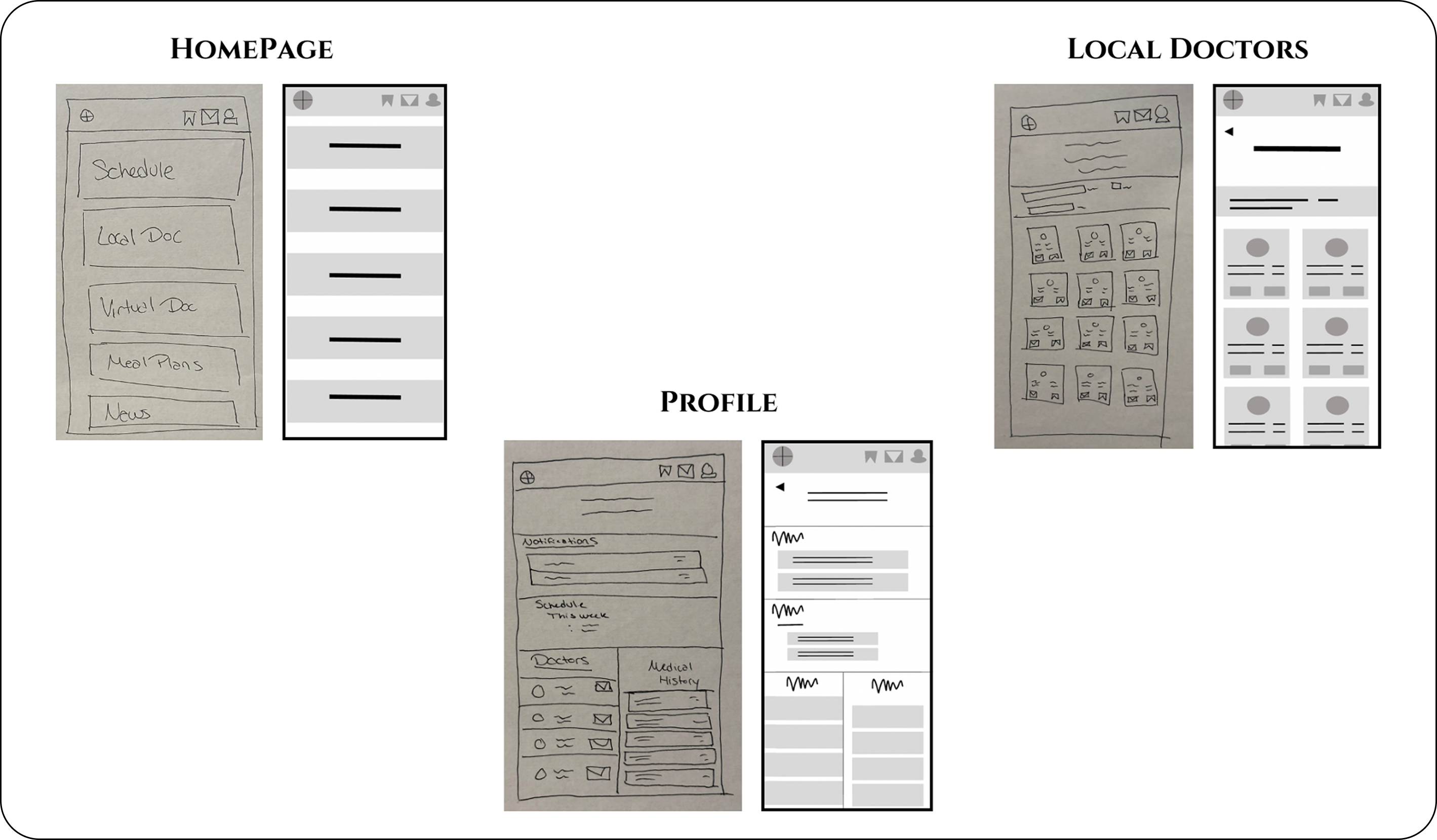
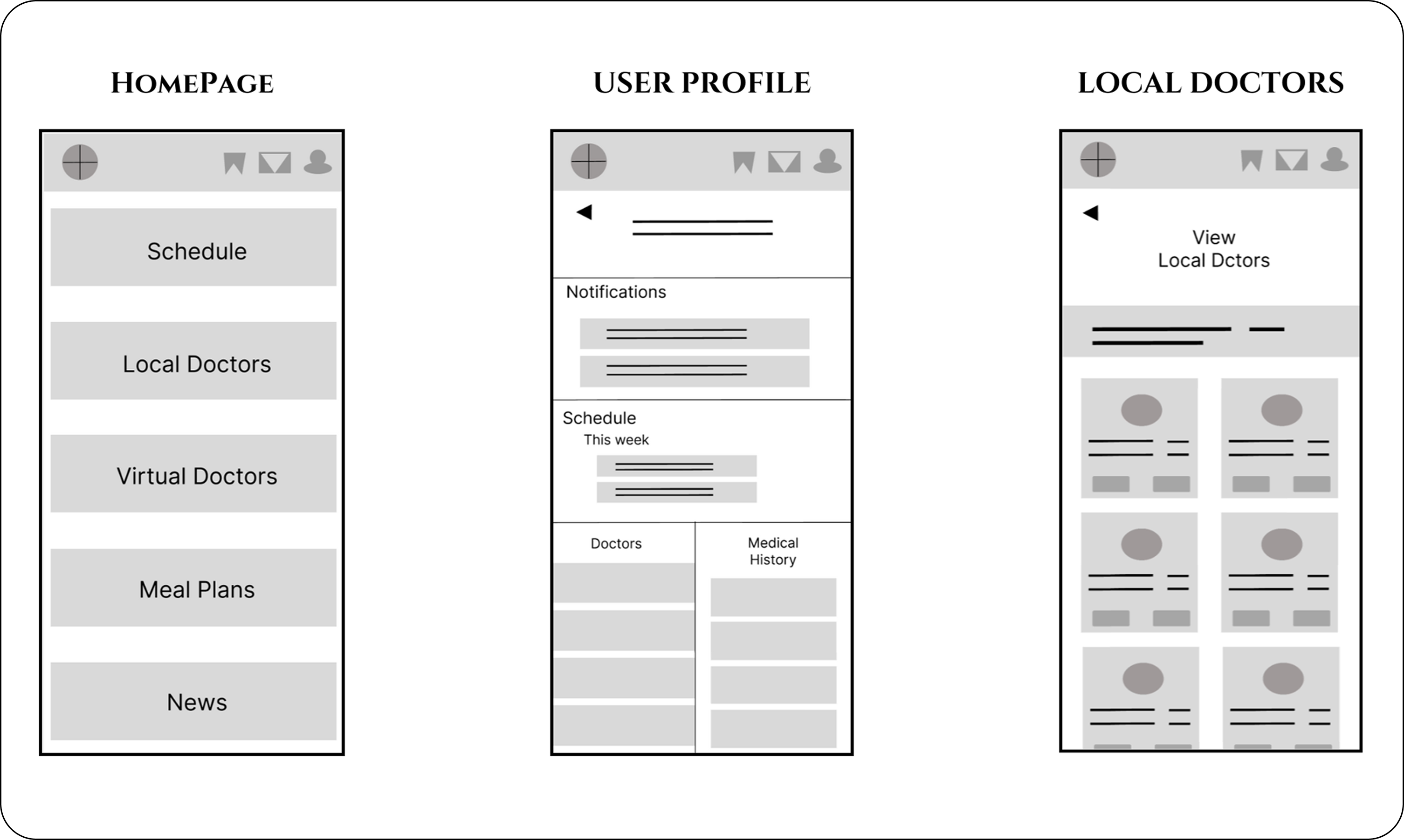
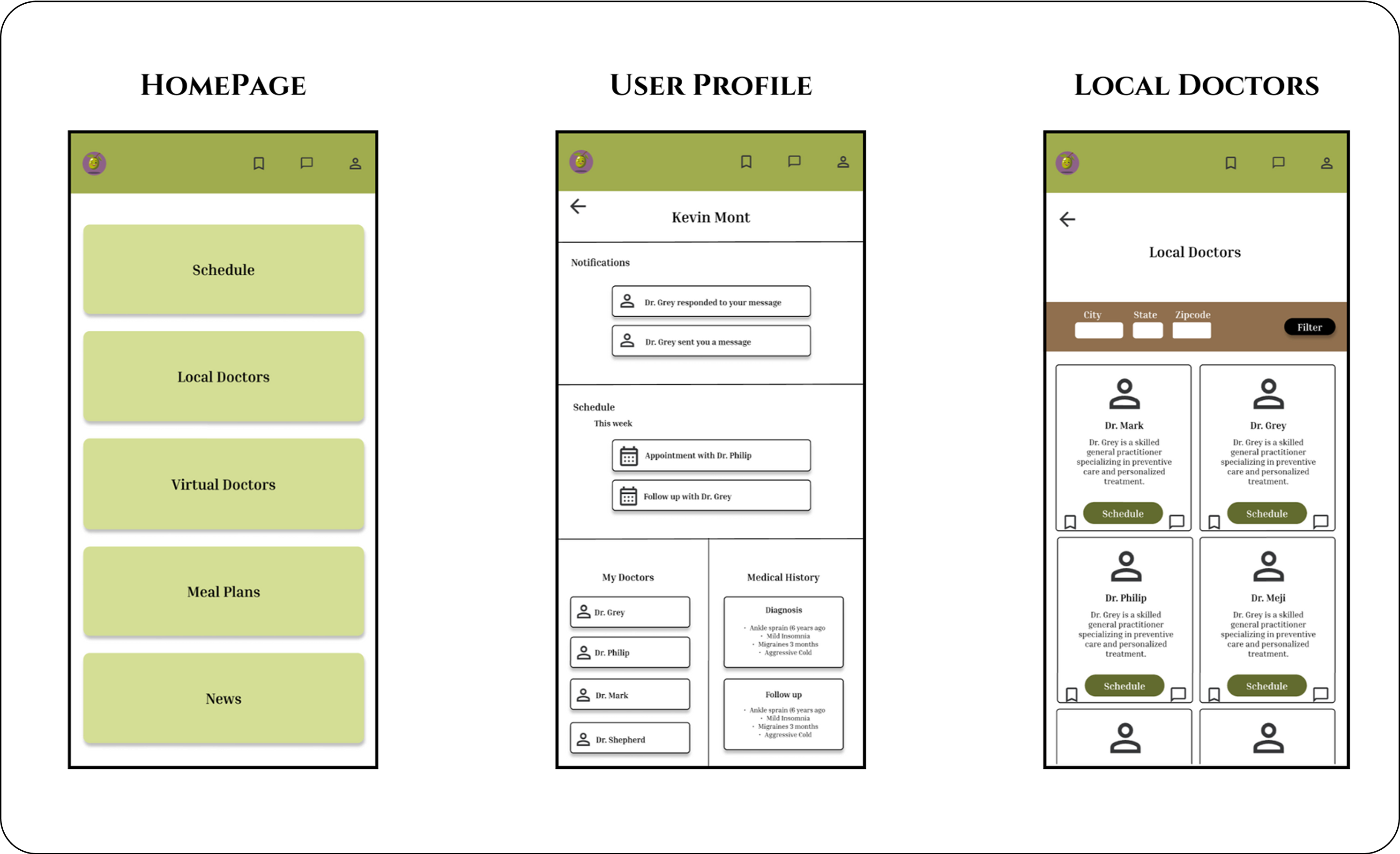
Method: 6 Users were chosen for the remote usability test, which was conducted on Google Meet. The product was tested through Figma, with sessions taking from 10 - 15 minutes
Summary: Most of the users were satisfied but many showed to be hesitant on where to go or what things were. My UX writing was simple but not clear.
A participant mentioned the law of similarity and how the login and sign-up page should reflect what most users see on other apps. As mentioned, the typography and the color of the app should reflect a professional state for doctors. Those colors would be red, blue, or white.
It was noticed that most users were frustrated when returning to the homepage, which highlighted the need for a home button.
Olive went through a series of iterations, with the help of feedback from several participants and other designers.
This was crucial to the design process, as I was so focused on certain aspects, it caused me to miss small errors.
.png)
.png)
.png)
.png)
I've Learned that UX design isn't about what I think is best, it's entirely about how users interact with the product - my first set of prototypes I had thought was easy to understand, since I had created it. When I saw how users used it realized how unclear or unnecessary certain features were.
In my first high-fidelity design, I thought everything was perfect. However, during usability testing, I quickly realized that the buttons were confusing and that I was missing a home button, something users needed.
My design was able to grow much more when it came to receiving thoughts and opinions from others, who could see things about the product that I had not seen.
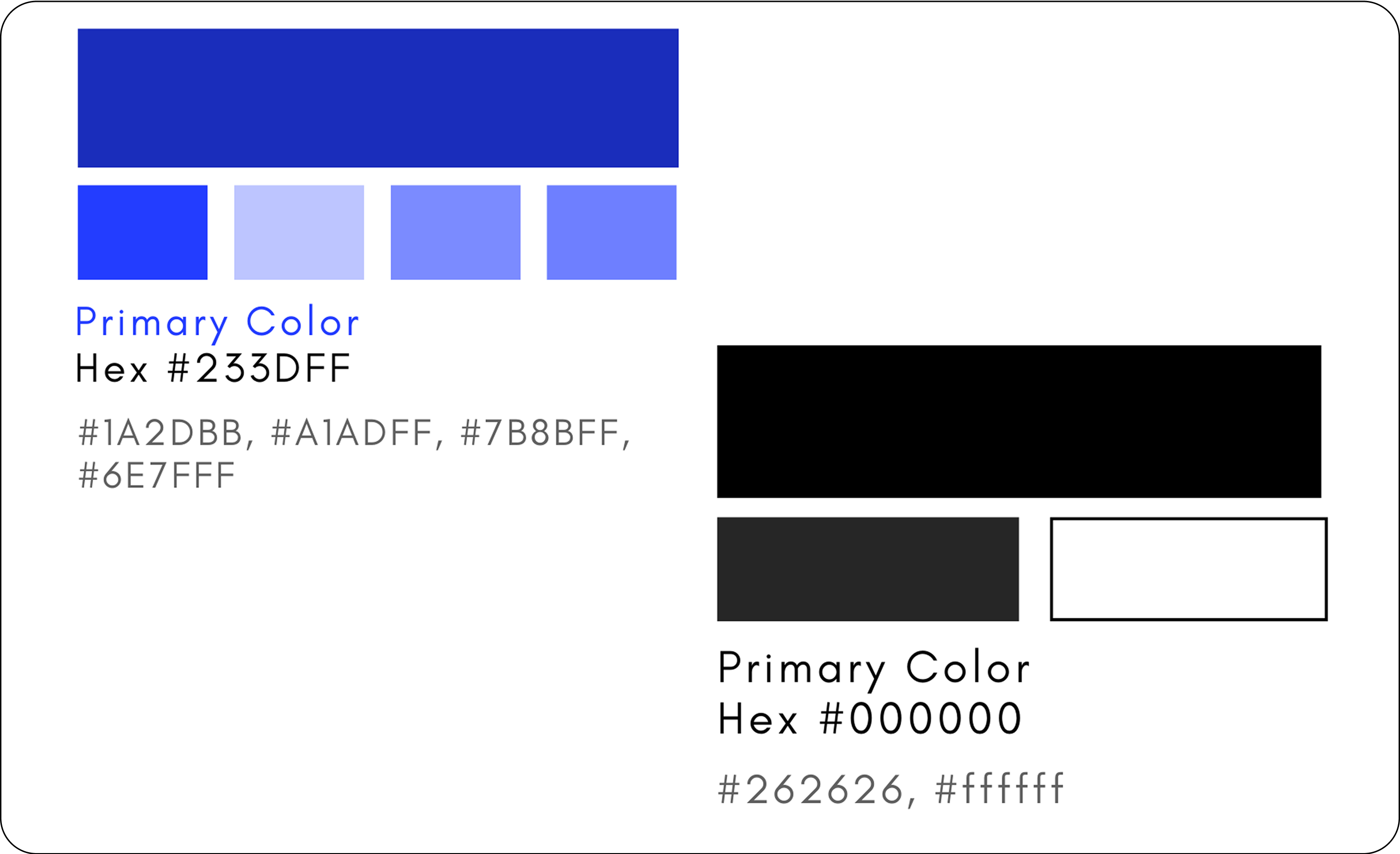
Blue is used for the navigation bars and buttons
Black is mostly used for the background frame of titles on pages and text on cards, and articles
White is used on the page and icon titles and background of cards
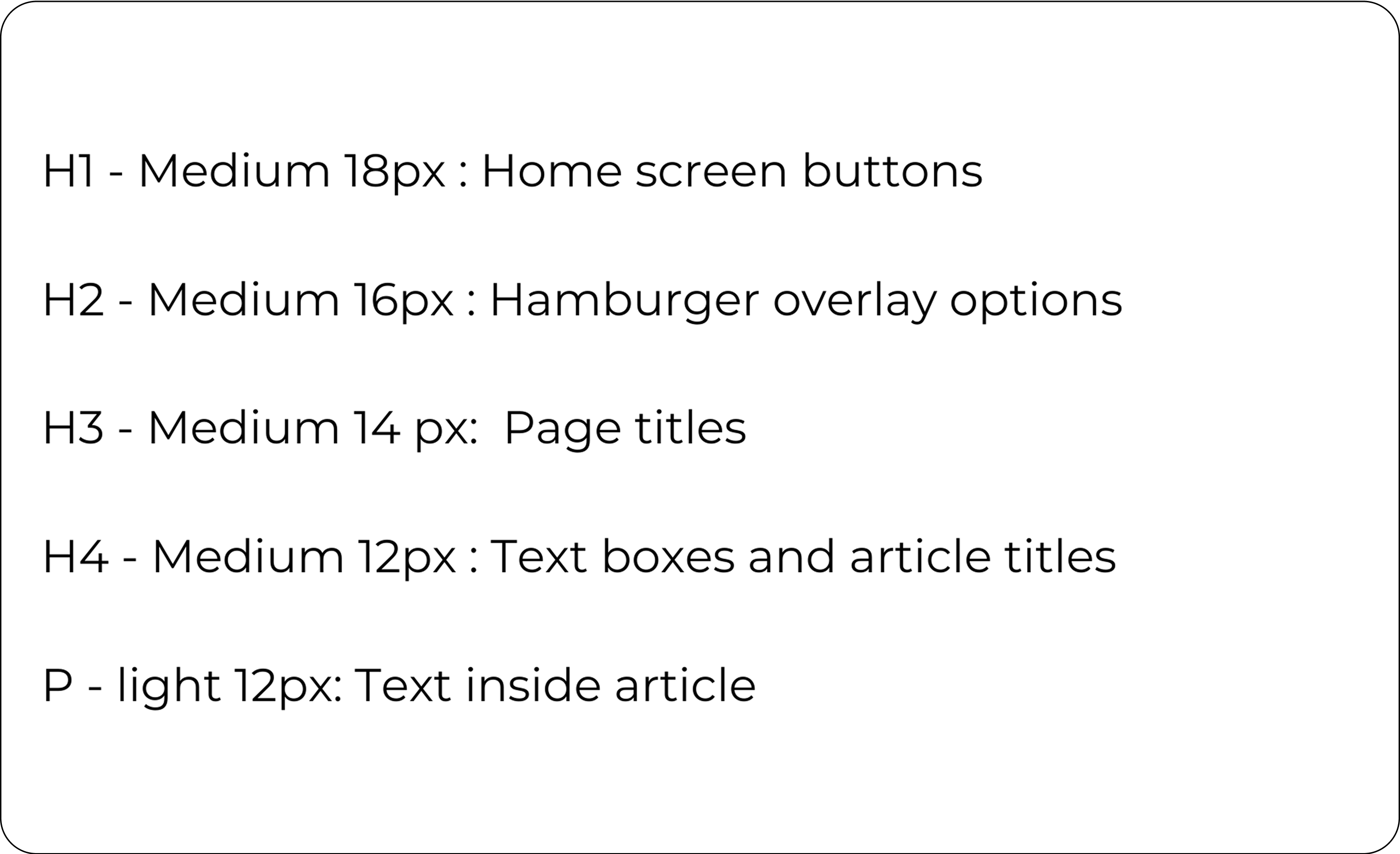
Font Choice: I decided on Montserrat for Olive because of its clean, modern, and easy to read on all screen sizes.
